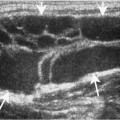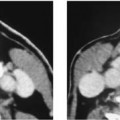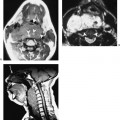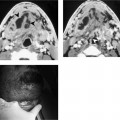Chapter 181 The most common mass in the buccal space is due to a squamous cell carcinoma (SCCA) involving the buccal mucosa. Buccal SCCA constitutes 10% of all oral mucosa carcinomas in the United States but more than 40% in India. This disparity is related to betel nut chewing. SCCA of the buccal mucosa is related to tobacco and alcohol consumption. Although the tumor is more commonly seen in males, there is an increasing incidence in females due to increasing use of tobacco and alcohol. Other risk factors include illfitting dentures, leukoplakia, and the consumption of smokeless tobacco (especially in the southeastern United States). More than half of patients with buccal space tumors present with advanced stage lesions (stage III and IV). Buccal mucosal tumors are usually exophytic, and deep invasion or ulcerations are relatively uncommon. Involvement of the pterygoid muscles gives rise to trismus. Buccal SCCA may extend into the buccal space from deep extension through the buccinator muscle. Posterior spread behind the pterygomandibular raphe leads to pterygoid muscle infiltration (Fig. 181–1). Late lesions may erode the mandible, hard palate, or maxillary sinus. Occult metastasis is present in 10% of patients, and 50% of patients have lymph node involvement at presentation. Early lesions can be treated by either surgery or radiation therapy. Late lesions are treated with combined surgery and postoperative radiation therapy. Because the incidence of occult metastasis is relatively low there is usually no need for neck dissection.
Squamous Cell Carcinoma
Epidemiology
Clinical Findings
Pathology
Treatment
Stay updated, free articles. Join our Telegram channel

Full access? Get Clinical Tree








